


Welcome to Aatman - Aatmanirbhar Bharat Centre for Design
The Aatmanirbhar Bharat Centre for Design has been conceived to celebrate the richly diverse handicrafts of India with a particular focus on those that have received the Geographical Indication (GI) certification. Aatmanirbhar Bharat, 'self-reliant' India, is a policy of the Government of India to develop Indian culture to make it a significant and important part of the Indian economy.
The two key focus areas of the Aatmanirbhar Bharat policy include the aspects of 'Vocal for Local' and 'Make in India'. It is beyond doubt that the handicrafts and handloom of India are the sectors that exemplify these directives in the most complete manner possible. This sector has been the mainstay of our rural economy, generating employment all across the country in significantly large numbers. It has also developed strong regional specificities as evidenced by the many GI certifications which have been awarded so far.
Read more about project Aatman

L1 Barrack, Red Fort, Delhi
Floor plan

20,000 square feet approx
with a total of 100 rooms at two levels.
Highlights
Bhavani Jamakkalam
11/23/2023
Bhavānī Jamakkāḷam is a fine cotton carpet/spread with multi-coloured crossbar effect on both sides woven in pit looms in and around Bhavānī area of Tamil Nadu.

Room No. 47-48
Nettle Yarn
Locally known as kaṇḍāli, or bichū ghās, the Himalayan Nettle is a self-sustaining plant that grows in a wild and cold climate.

Room No. 61
Tholu Bommalata
11/23/2023
Leather Puppetry from Andhra Pradesh, known as ‘Tōlu (leather) bom'malāṭa (dance of the puppets)’, in Telugu, is one of the oldest theatre traditions of the region involving shadow dance of puppets. It received the GI tag in 2008.

Room No. 9-12
Camel Belt Braiding
Ply-split braiding is an ancient art practiced for making elaborate camel girths in north-western India. The ṭāng is a belt tied to one side of the wooden saddle on the camel,

Room No. 65
Chaturanga
11/23/2023
Chaturanga is an ancient Indian strategy board game that is considered one of the predecessors of chess.

Room No. 51-56
Himalayan Indigo
11/23/2023
Indigo, a plant known for its vibrant blue dye, is ensconced in a rich contentious colonial history owing to the exploitative practices imposed by the British rulers in India.

Room No. 84-86
Jaipur Rugs
11/23/2023
The art of hand-knotted carpet weaving at Jaipur Rugs thrives through the intricate work of 180 skilled hands. Rooted in a 2500-year-old tradition, artisans bring each rug to life with meticulous attention to detail.

Room No. 31-34
Pulicat Palm Leaf
11/23/2023
The palm tree, indigenous to Tamil Nadu, supports a range of livelihood in rural regions of the state, the significance of which is deeply entrenched in the art, culture, ritual and everyday life of local communities.

Room No. 45-46
Water Hyacinth
11/23/2023
Water Hyacinth is a free-floating perennial plant found in abundance in every water body, from large lakes to little ponds in rural areas of eastern India.

Room No. 81-82
Bhavani Jamakkalam
11/23/2023
Bhavānī Jamakkāḷam is a fine cotton carpet/spread with multi-coloured crossbar effect on both sides woven in pit looms in and around Bhavānī area of Tamil Nadu.

Room No. 47-48
Nettle Yarn
Locally known as kaṇḍāli, or bichū ghās, the Himalayan Nettle is a self-sustaining plant that grows in a wild and cold climate.

Room No. 61
Tholu Bommalata
11/23/2023
Leather Puppetry from Andhra Pradesh, known as ‘Tōlu (leather) bom'malāṭa (dance of the puppets)’, in Telugu, is one of the oldest theatre traditions of the region involving shadow dance of puppets. It received the GI tag in 2008.

Room No. 9-12
Camel Belt Braiding
Ply-split braiding is an ancient art practiced for making elaborate camel girths in north-western India. The ṭāng is a belt tied to one side of the wooden saddle on the camel,

Room No. 65
Chaturanga
11/23/2023
Chaturanga is an ancient Indian strategy board game that is considered one of the predecessors of chess.

Room No. 51-56
Himalayan Indigo
11/23/2023
Indigo, a plant known for its vibrant blue dye, is ensconced in a rich contentious colonial history owing to the exploitative practices imposed by the British rulers in India.

Room No. 84-86
Jaipur Rugs
11/23/2023
The art of hand-knotted carpet weaving at Jaipur Rugs thrives through the intricate work of 180 skilled hands. Rooted in a 2500-year-old tradition, artisans bring each rug to life with meticulous attention to detail.

Room No. 31-34
Pulicat Palm Leaf
11/23/2023
The palm tree, indigenous to Tamil Nadu, supports a range of livelihood in rural regions of the state, the significance of which is deeply entrenched in the art, culture, ritual and everyday life of local communities.

Room No. 45-46
Water Hyacinth
11/23/2023
Water Hyacinth is a free-floating perennial plant found in abundance in every water body, from large lakes to little ponds in rural areas of eastern India.

Room No. 81-82
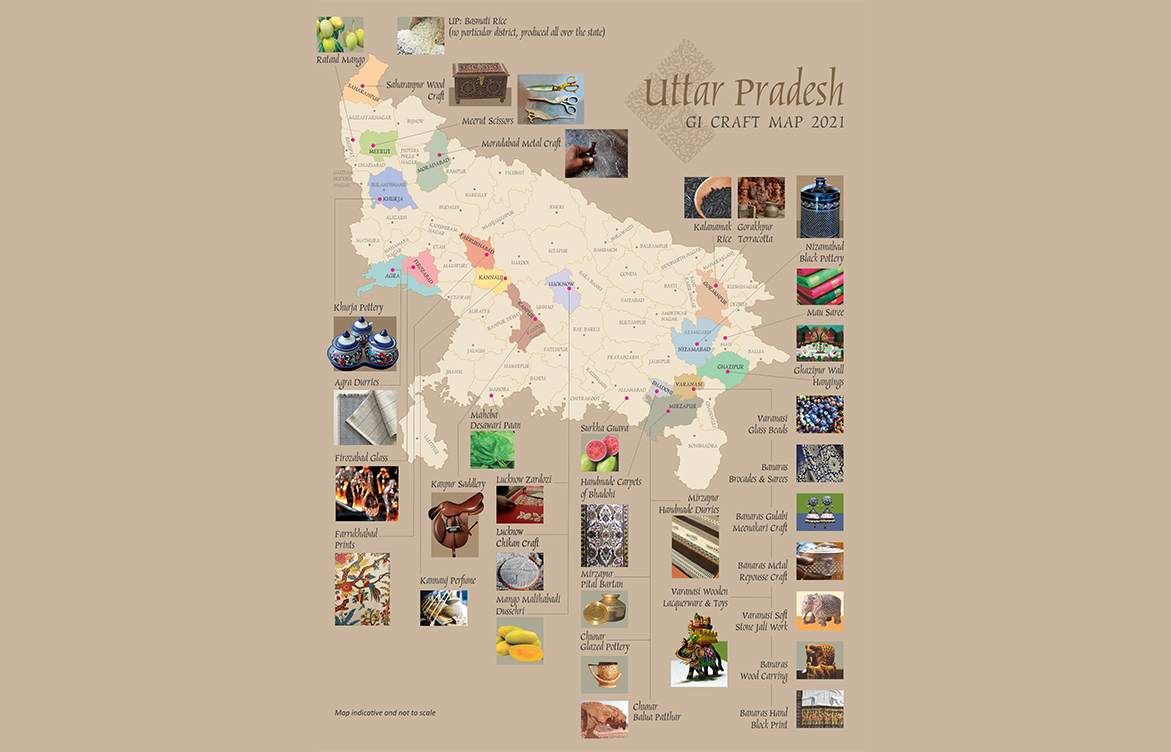
GI Representation - Ek Bharat Shreshtha Bharat
Uttar Pradesh

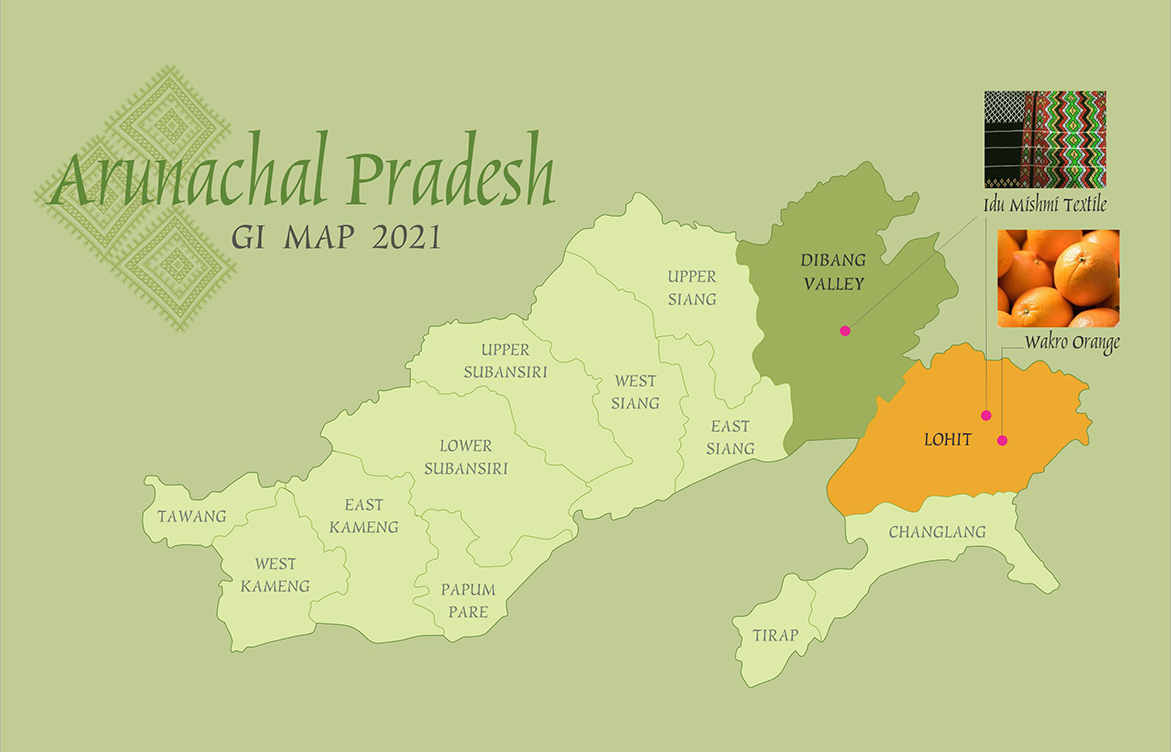
GI Representation - Ek Bharat Shreshtha Bharat
Arunachal Pradesh

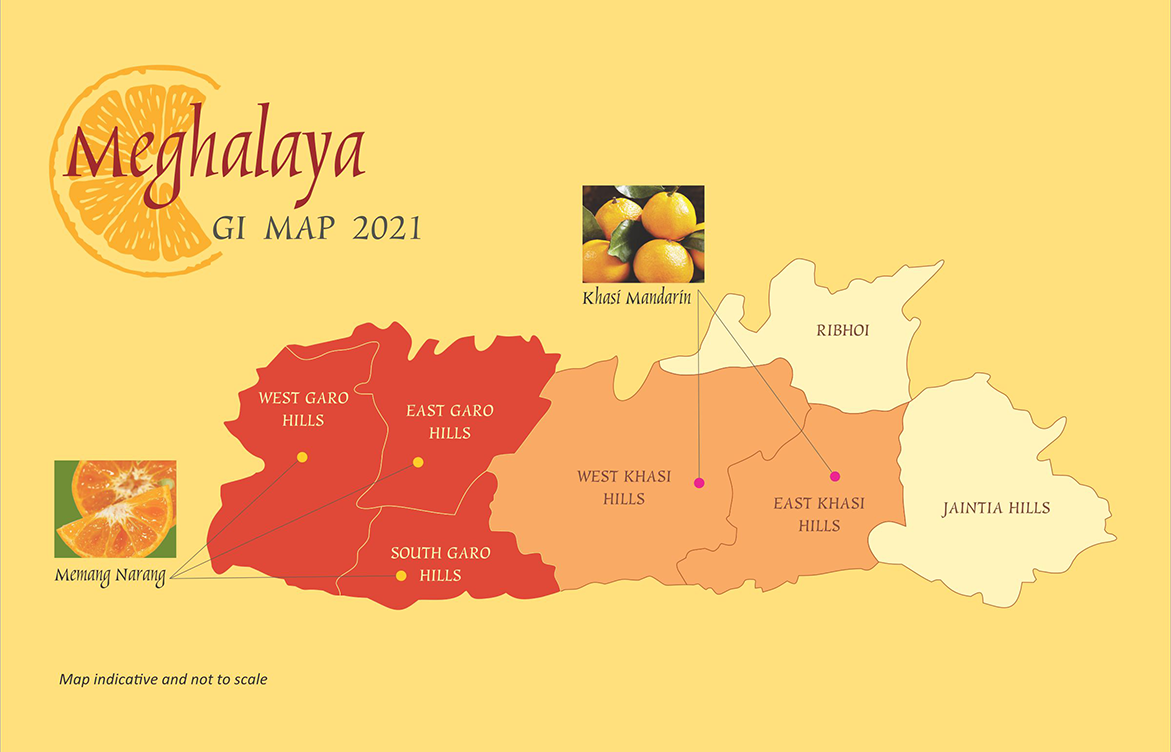
GI Representation - Ek Bharat Shreshtha Bharat
Meghalaya

GI Representation - Ek Bharat Shrestha Bharat
Ek Bharat Shrestha Bharat is a unique programme that aims to promote mutual understanding between different states and union territories through the concept of a special pairing between the two.
Read more
Interpretation Centre

Room No: 19 - 26
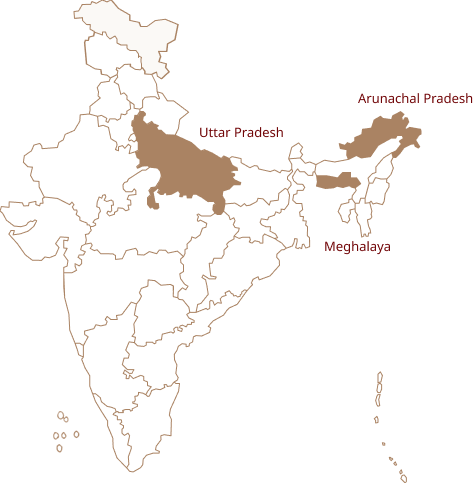
Statewise GI

Uttar Pradesh

Arunachal Pradesh

Meghalaya
Art Installation
Renowned Indian artists draw inspiration from traditional crafts to create art installations that explore contemporary interpretations of Indian craft practices, while also reflecting on their own artistic journeys.

Public Sector
State Bank Of India
The State Bank of India is India’s largest and most trusted bank. Corporate Social Responsibility
(CSR) is one of the activities through which SBI plays the role of a responsible corporate citizen
and discharges its social responsibility.
Learn more 
Public Sector
National Institute of Design, Ahmedabad
The National Institute of Design, Ahmedabad, is an autonomous body under the Department for Promotion of Industry and Internal Trade (DPIIT), Ministry of Commerce & Industry, Government of India.
Learn more 
Public Sector
Kalakshetra Foundation, Chennai
The Kalakshetra Foundation was founded in 1936 by Rukmini Devi Arundale, theosophist, danseuse, and Bharatnatyam choreographer, as a centre for artistic endeavour.
Learn more Successful Craft Stories
In this section, you will experience a myriad of traditional crafts, displayed as exemplars of the remarkable craftsmanship and diversity in the Indian handicrafts sector. Each craft form carries a rich regional legacy and has a unique story to tell. Ranging from historic pieces to contemporary adaptations, these craft stories embody the versatility and evolution of Indian craft-making.

Papier-Mâché (Kashmir Loom)

Araṅmulā Kannaḍī

Molelā Plaques

Eṭikopakkā
Gallery

5

6

7

8

1

2

3

4

5

6

7

8

1

2

3

4

5

6

7

8
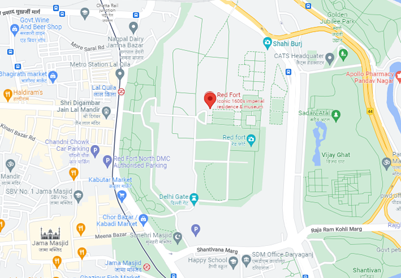
Managed by Broadcast Engineering Consultants India Limited
@ Developed by ATechnos
© 2022. All Rights Reserved Privacy Policy / Terms of Use

GI Representation - Ek Bharat Shreshtha Bharat
Uttar Pradesh




.png)


















